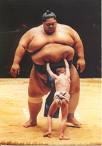 i saw the grateful dead many times [i don't keep track of these silly numbers]. my official law school student photo shows me the monday after such a weekend of deadness, wearing a smoking skull t-shirt. i had no idea that these photos would be used by all future professors for seating chart identification. whatever, right?
i saw the grateful dead many times [i don't keep track of these silly numbers]. my official law school student photo shows me the monday after such a weekend of deadness, wearing a smoking skull t-shirt. i had no idea that these photos would be used by all future professors for seating chart identification. whatever, right?.....
the times has a wonderful [and lengthy] article about the shows of the dead over the years. what follows is a tease, which closes with a link to the entire story, complete with some great illustrations. it's worth a read:
Bring Out Your Dead
By BEN RATLIFF
I WENT to a Phil Lesh concert in New York last fall, on the third night of a 14-night run. I sat next to a man who looked informed: he listened with familiarity and good humor and a touch of impatience, as if he wanted to fast-forward through certain parts.
“Seen any of the other shows?” I asked.
“I’ve been to every show since 1972,” he said. “In the New York area.”
His name was Jimmy . By his definition, “every show” meant every concert by the Grateful Dead, the San Francisco rock band, until the death of Jerry Garcia, its guitarist and singer in 1995, and then every subsequent show by Phil Lesh, the band’s bassist, who has led various touring bands with a sound much in the spirit of the Dead. We got to talking. I asked when he thought the Dead reached its peak, game to try out a half-formed argument for 1975, or thereabouts.
“Well, I agree with the people who say it was May 8, 1977,” he said.
Jimmy was jumping a level on me. There are at least five different levels to how fans talk about the Dead. The basement level concerns the band’s commercially released albums. This is how a lot of interested but inexpert people once talked about the Dead — myself included — in the early 1980s. I had a couple of skunky-sounding audience tapes, tinkling out distant brown scurf from Nassau Coliseum, but I was an unconnected kid. I listened to “Live/Dead,” “Europe ’72,” and “Anthem of the Sun” — all in the racks at Sam Goody.
The next level is periods or eras, the conversation I was prepared for. There was the aggressive, noisy, color-saturated improvising from 1968 to 1970; the gentler and more streamlined songwriting and arranging of ’72 and ’73; the spooky harmonies of 1975; the further mellowing and mild grooves that lay beyond. Next comes the level of the Dead’s best night: Jimmy’s level, one based on years of close listening to noncommercial live recordings, from the band’s own engineers or radio broadcasts or audience tapers. These began circulating in the early ’70s and became commonplace by the mid-1980s, after I had wandered off the trail.
After that comes particular songs within particular performances. (Some will say the “Dark Star” from Veneta, Ore., on Aug. 27, 1972, or the “Dancing in the Street” from Binghamton, N.Y., on May 2, 1970, encapsulates much of what they like about the Grateful Dead.) Beyond that is an area with much thinner air: here involving, say, audience versus soundboard tapes, the mixing biases of different engineers, techniques of customizing early cardioid microphones, and onward into the darkness of obsession.
In any case, once you get to Level 3, you have a sufficiently authoritative understanding of the Dead. Or so I thought.

1 comment:
My friend Tracy busts his dental chops in veneta
Post a Comment